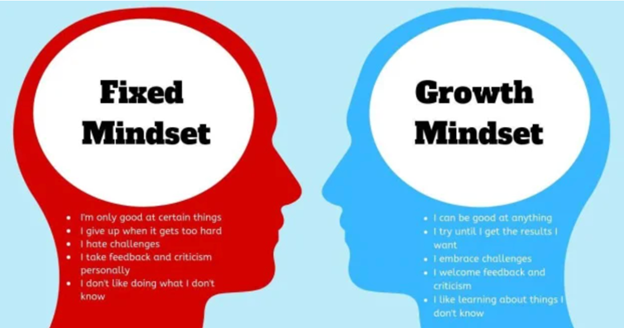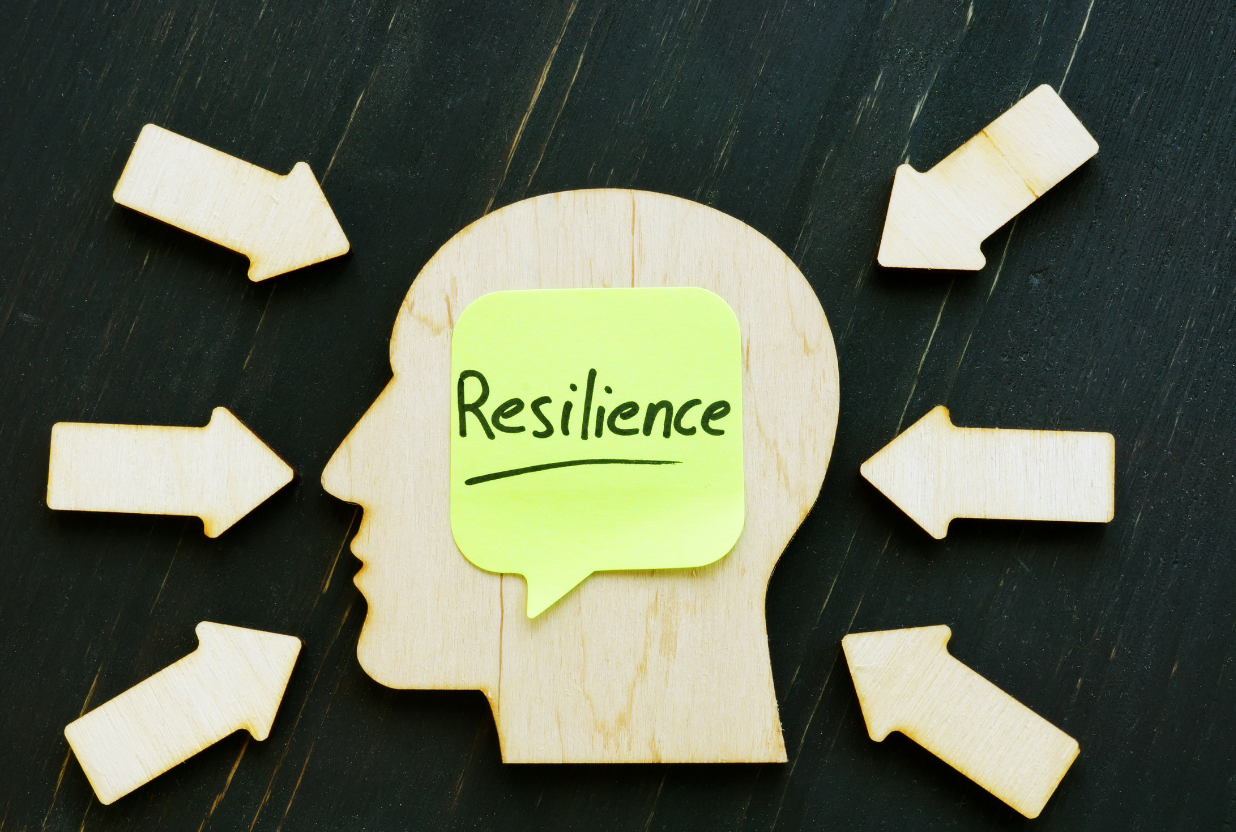Have you ever wondered if you were capable of more? Or thought to yourself, “I’m not satisfied with where I am,” – in your career, relationships, marriage, etc…
Maybe you’ve felt disappointed that you were going to be in this position or situation for the rest of your life.
We’ve got good news: things can change. You can change.
The key? Growth Mindset.
In this post, we’ll walk you through the basics of growth mindset and how to develop it for yourself.

The Benefits of Developing Growth Mindset
Growth mindset is the belief that your abilities, skills, and attributes can all be improved. It’s the belief that you aren’t stuck where you are or limited by your natural traits.
It’s a term coined by Professor Carol Dweck that refers to our ability to grow and develop through hard work and dedication. She says, “In a growth mindset, people believe that their most basic abilities can be developed through dedication and hard work—brains and talent are just the starting point.”
Growth mindset is all about resilience, bouncing back from failure, getting excited about challenges, believing in yourself, and changing the status quo.
If you can develop a growth mindset, you can overcome insecurities, break out of ruts, be unswayed by setbacks, and take on just about anything. The benefits are endless, but we want to highlight just a few in detail. Developing a growth mindset can help you become:
- A Lifelong Learner: When you develop a growth mindset, you realise you can learn just about anything. This belief fuels the desire to learn more and develop further. In other words, once you start learning with this mindset, there’s no stopping you. If you can develop a growth mindset as a student, you’ll set yourself up for success the rest of your life.
- More Successful in Your Career: According to a 2017 report on the future of work, McKinsey and Company believe hundreds of millions of workers will need to learn new skills in order to stay competitive in the workforce, due to the rise of Artificial Intelligence. If you can develop a growth mindset and learn new skills, you can secure your future and remain valuable to employers. You’ll also be more likely to be a successful leader.
- Content in Life: Not only will growth mindset help you achieve more in your career, but in life as well. Continued development leads to a satisfaction in life that you can’t put a number on. It leads to improvement in relationships, less aversion to risk, and an openness to new experiences.
But if we’re going to develop a growth mindset, we first need to understand what holds us back: the fixed mindset.
Growth Mindset v.s. Fixed Mindset
Fixed mindset is the opposite of growth mindset.
When operating in a fixed mindset, individuals believe their traits, skills, and abilities are set in stone and define them. They don’t believe in the possibility of change and development. They may not state this explicitly, but they believe it – and it’s clear in their actions and outlook on life. Individuals with a fixed mindset believe that talent alone leads to success, and that our efforts are largely irrelevant.
The fixed mindset leads to individuals and groups plateauing over time, and becoming stuck in the status quo.

Our minds are constantly bouncing back and forth between these mindsets. Most of us actually default to a fixed mindset.
So to develop a growth mindset, we need to become aware of our fixed mindset triggers.
How to Develop a Growth Mindset
The key to developing a growth mindset is learning to recognize what triggers drive us to adopt a fixed mindset. Once we’ve identified them, we’re then able to combat them, and take steps toward changing our minds.
Let’s look at the eight most common fixed mindset triggers:
- Mindset Beliefs: If one believes their intelligence, talents, and personality can’t be changed, then their willingness to learn new skills is minimal.
- High Effort: Those with a high effort trigger believe things should come easy to them and not require much work on their part.
- Challenges: This trigger comes out when one doesn’t like tasks where the outcome is uncertain or failure is likely.
- Setbacks and Failure: Someone with a setback trigger is disproportionately affected by setbacks and failure.
- Success of Others: This trigger occurs when someone wants to be perceived as more competent than others. They are negatively affected when others succeed more than themselves.
- Comfort Zone: A person with a comfort zone trigger gets anxious about unfamiliar situations or tasks.
- Feedback: Those with a feedback trigger experience anxiety in feedback situations and tend to avoid it altogether.
- Grit: People with a grit trigger show a drop in motivation when asked to complete tasks they aren’t interested in.
To develop a growth mindset, first you should consider where you are at the moment. A good first step is to know where you stand. Keep in mind, most people sway back and forth between mindsets – most people don’t operate in one 100% of the time. That said, take some inventory of your current mindset most of the time.
Next, browse the above list and try to identify the triggers you run into most that send you into a fixed mindset.
Once you’ve identified them, your goal is to become hyper aware of these triggers and combat them by crowding them out with the relevant truths. For example, if feedback is a dominant trigger for you, and you receive constructive feedback, you may begin to notice some anxiety. As you recognize this, you might remind yourself, “This is for my benefit. Feedback helps me become the best version of myself. I’m going to take deep breaths and receive it.”
Over time, as you identify your triggers and learn to shift your thinking, the process will become a habit, and you’ll remain in growth mindset more often.
For companies and teams, growth mindset corporate trainings have been shown to result in changed mindsets and higher team performance.
Tips for Developing a Growth Mindset
We want to leave you with some specific tips and tricks to help you on your growth mindset journey:
- Spend Daily Time Reflecting
At the end of each day, spend a little time thinking about instances throughout your day that triggered the fixed mindset in you. How can you better recognise this tendency next time? How can you give yourself better self-talk?
- Identify Opportunities to Celebrate Others
For many, seeing others’ success is a fixed mindset trigger. To fight this, look for opportunities and take every advantage to celebrate the success of those around you. Be intentional about affirming friends and family.
- Ask for Feedback Regularly
Asking for feedback is a humbling and vulnerable practice. But it helps us identify our weak spots and limitations on our way to developing growth mindset for the long term.
- Look for Growth Mindset Examples
Seeing others succeed in developing a growth mindset can inspire us to do the same. Seek out examples of people who have grown, changed, and developed on their way to success. Watch inspiring documentaries and read biographies about people who have overcome limitations.
Develop Growth Mindset Over Time
As we conclude, it’s important to note that developing growth mindset doesn’t happen overnight. It takes time. As you set goals and start on your journey, know your limitations and set realistic goals.
If you don’t see progress like you initially thought you would, it’s okay! Keep persevering.





